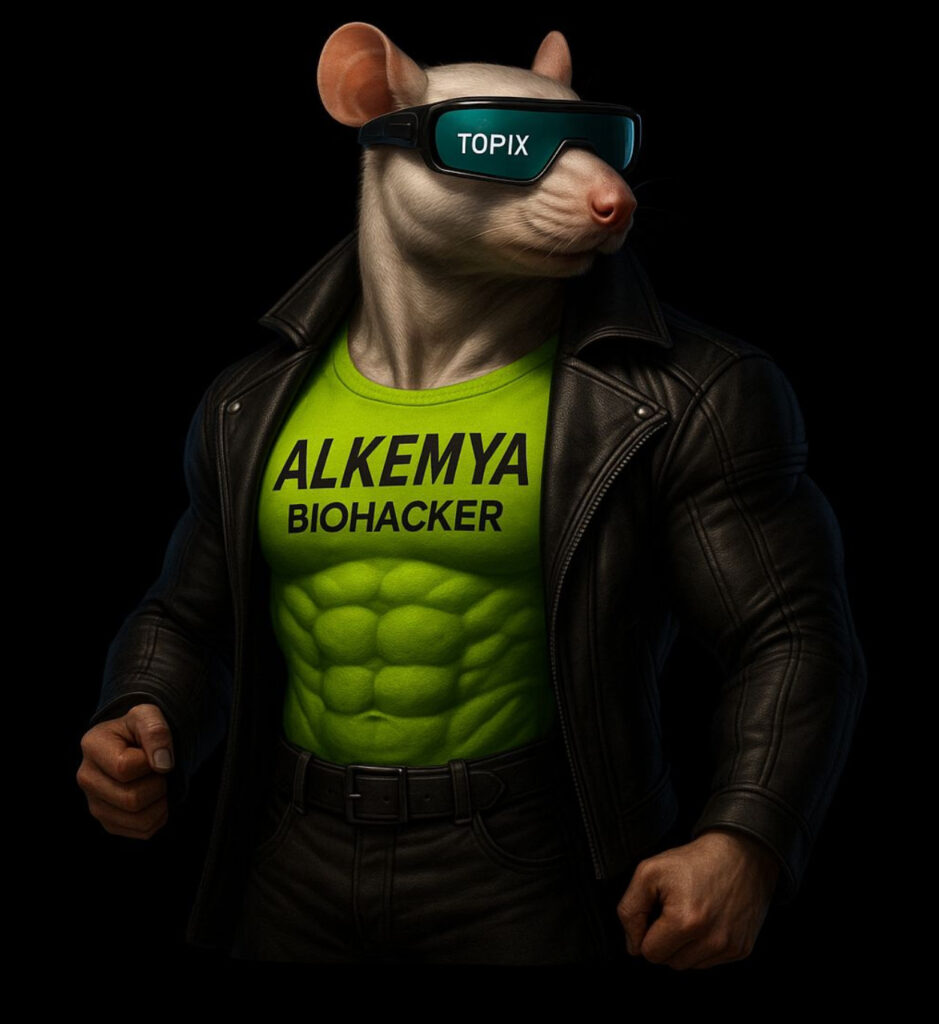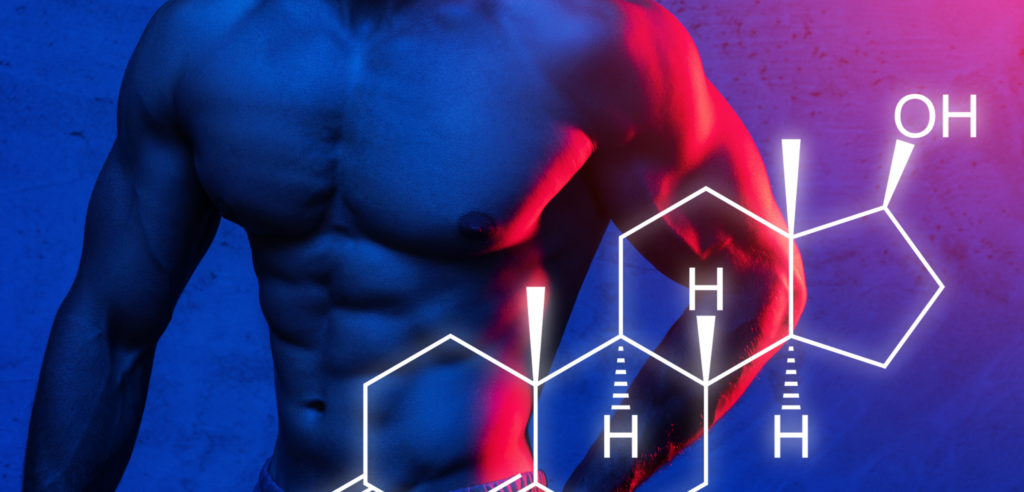BPC-157 and TB-500 are the most famous Healing Peptides.
Remember the days of childhood, when a simple fall left a skinned knee that, thanks to a bandage and maternal “magic,” seemed to heal almost instantly?
As the years go by, however, our bodies no longer show the same resilience: wounds take considerably longer to heal, sometimes extending to months, reflecting a slowdown in our innate ability to repair.
This decline is partly attributable to the reduction of growth factors and skin stem cells with age, a factor that adversely affects the speed of healing.
The situation is further complicated in the presence of chronic diseases, especially those affecting blood vessels, making the healing process even slower.
In this context, two peptides emerge as promising solutions to accelerate healing and recovery: TB-500 and BPC-157.
The two peptides in question are celebrated for their excellent therapeutic properties, making them ideal candidates for the treatment of injuries to bones, joints, connective tissues, and muscles.
The real challenge lies in determining which of the two is the most appropriate choice.
This article aims to explore TB-500 and BPC-157 in detail, highlighting their differences and similarities, to guide you in making the best choice for your needs.
TB-500 vs BPC-157: Overview
TB-500 and BPC-157 are synthetic peptides known for their impressive healing and regenerative capabilities.
TB-500 plays a crucial role in tissue repair due to its ability to promote cell migration, angiogenesis, and new blood vessel formation, which are key elements for an effective healing process.
On the other hand, BPC-157, a 15-amino acid compound derived from a stomach protein, shows remarkable regenerative effects, especially at the level of the gastrointestinal tract, and is being studied for its potential in wound healing and inflammation reduction.
Similarities between TB-500 and BPC-157
Despite their specificities, TB-500 and BPC-157 share the ability to significantly accelerate recovery from injury.
Both stimulate collagen production and promote repair of muscles, tendons, joints, and bones, mainly through the process of angiogenesis.
Their joint action in promoting recovery and tissue regeneration makes them valuable tools in the field of regenerative medicine.
In the remainder of this article, we will delve into the specifics of each peptide, exploring their benefits, dosage, side effects, and potential applications, to offer you a comprehensive guide in choosing between TB-500 and BPC-157.
TB-500.
TB-500 stands out in the field of regenerative medicine as a synthetic version of thymosin beta-4 (TB4), a peptide composed of 43 amino acids originally isolated from bovine thymus tissue.
This peptide plays a crucial role in the development of T lymphocytes, key cells of our immune system.
Originally designed for veterinary use, particularly in horses, TB-500 was later banned in horse racing competitions and, subsequently, also by the World Anti-Doping Agency (WADA) for sports competitions because of its potent regenerative properties.
Mode of Action of TB-500.
TB-500 exerts its therapeutic action through mechanisms that include increasing immune cell production and reducing inflammatory mediators.
Its ability to bind to actin in the cytoskeleton promotes cell migration and mobilization of stem cell progenitors, which are essential for the process of tissue regeneration.
Actin is a very important protein found in all cells of the human body.
Imagine it as one of the many small parts that make up the internal structure of a cell, somewhat like the bricks in a LEGO castle.
These bricks can join together to form long chains or filaments that help the cell maintain its shape, move and perform various activities, such as splitting in two during cell reproduction or allowing muscles to contract.
When we think of actin, we can imagine it as a system of tracks within the cell.
Along these tracks, various “trains” (which can be other proteins or cellular complexes) travel, carrying necessary materials or transmitting signals from one part of the cell to another. This helps the cell react and adapt to what is happening both inside and outside of it.
In addition, actin is crucial when a cell needs to move or change shape.
For example, if a skin cell needs to move to close a wound, actin helps “push” the cell in the right direction.
So in simple words, actin is the “scaffolding2 that supports the cell and allows it to move and do its job properly.
TB-500 also plays a key role in angiogenesis, the process of forming new blood vessels, which is vital in tissue repair and healing.
This peptide contributes significantly to the reduction of tissue fibrosis, limiting scar formation through the decrease of myofibroblasts in wounds, and enhances cell motility, thereby facilitating recovery in injured areas.
Therapeutic Benefits of TB-500.
One of the main benefits of TB-500 is its ability to accelerate wound healing and promote blood vessel formation.
Studies in rodents have shown that TB-500 promotes angiogenesis and cell migration in damaged tissues, accelerating healing.
This process is particularly important not only in wound repair but also in other physiological functions, such as embryonic development and growth.
Research has shown that TB-500 can improve corneal wound healing in patients by effectively treating neurotrophic corneal epithelial defects, which are difficult to heal and often cause scarring and vision loss.
In addition, TB-500 supports nerve regeneration, a property highlighted by its presence in the nervous system and studies showing its role in improving functional recovery in animal models of brain inflammation.
These studies suggest that TB-500 may stimulate the formation of oligodendrocytes, the cells responsible for forming the myelin that lines neurons, offering potential applications in the therapy of neurodegenerative diseases such as multiple sclerosis.
TB-500 and its Impact on Liver and Brain Health.
TB-500, known for its regenerative properties, emerges as a potent therapeutic agent that can positively influence liver and brain health.
This peptide, through anti-inflammatory and anti-healing mechanisms, is shown to be effective in preventing and treating liver damage, including the reduction of scarring, as demonstrated by studies published in reputable scientific journals.
Effects of TB-500 on the Liver.
Research has shown TB-500’s ability to significantly reduce levels of inflammatory cytokines in the blood, key elements in the inflammatory process and scar formation in the liver.
Specifically, one study found that administration of TB-500 immediately after exposure to lethal doses of LPS (lipopolysaccharide) in rats significantly reduced mortality and proinflammatory cytokine levels, suggesting potential clinical use of TB-500 in the treatment of septic shock and endotoxemia-related syndromes.
TB-500 was also shown to improve survival rates in animal models of septic shock, underscoring its importance in modulating inflammatory responses and potentially in treating liver disorders such as NAFLD (Non-Alcoholic Fatty Liver Disease), following the gut-liver axis theory.
Benefits of TB-500 for Brain Health
TB-500 not only exerts beneficial effects on the liver but also extends to the nervous system, promoting regeneration and protection of brain tissue.
Research in animal models has shown that the peptide facilitates the formation of new blood vessels and stimulates processes reminiscent of the early stages of post-stroke brain development, suggesting potential application in neurorestorative treatment.
Thymosin beta4, of which TB-500 is a synthetic version, has also been shown to stimulate vasculogenesis and angiogenesis in the brain, as well as promote the formation of myelin around nerve fibers, which is essential for the protection and proper functioning of the nervous system.
Research underscores the importance of restorative therapies focused not only on mitigating the immediate damage caused by events such as strokes, but also on supporting and stimulating the self-healing processes of the brain, spinal cord, and peripheral nerves.
This approach represents a breakthrough in the treatment of neural injury and disease, laying the foundation for future therapeutic strategies focused on regeneration and reconstruction of the nervous system.
In conclusion, TB-500 presents itself as a promising therapeutic agent with potential applications in the treatment of liver disorders and neuroprotection, offering new perspectives for the treatment of a wide range of pathological conditions through its regenerative and anti-inflammatory mechanisms.
BPC-157.
BPC-157, a peptide known as Body Protecting Compound 157, is distinguished by its remarkable regenerative and healing properties.
This peptide is composed of 15 amino acids and is derived from human gastric juices.
Despite a lack of FDA approval for therapeutic uses and a ban by WADA for use in sports, BPC-157 has attracted attention for its potential applications in the field of regenerative medicine.
Mechanism of Action of BPC-157.
BPC-157 promotes angiogenesis, or the formation of new blood vessels, through interaction with crucial growth factors such as Early growth response factor 1 (EGR-1) and Vascular Endothelial Growth Factor (VEGF).
This process is critical for wound healing and cell regeneration, as it facilitates the formation of new vascular networks needed to transport nutrients and oxygen to damaged areas.
In addition, the peptide increases nitric oxide production and activates fibroblasts, which are essential for vascular and connective tissue regeneration.
It also impacts the dopaminergic and alpha-adrenergic systems, contributing to the healing of gastrointestinal disorders.
Main Benefits of BPC-157.
- Healing Wounds:
BPC-157 has been shown to significantly accelerate the wound healing process. In animal experiments with burns, application of BPC-157 promoted skin regeneration, facilitating collagen formation and reducing inflammation. - Anti-ulcer Effects and on Healing of Gastric Injuries:
The peptide showed significant anti-ulcer effects and improved healing of gastric lesions in animal models, demonstrating potential benefit for corticosteroid-induced lesions as well. - Counteracting Corticosteroid-Induced Injury:
In addition to its effects on wound healing and gastric injury, BPC-157 inhibited immunosuppression caused by corticosteroid use, highlighting its potential as a multifunctional therapeutic agent.
These data underscore the potential of BPC-157 in promoting healing and tissue regeneration in a variety of clinical settings.
BPC-157 is now well known for its extraordinary regenerative capabilities, as it has shown remarkable efficacy in promoting rapid healing of soft tissue injuries, including tendons, muscles, and ligaments.
This property proves critical for both injuries requiring surgical repair and those amenable to natural healing.
Published research, such as that in the Journal of Applied Physiology, indicates that BPC-157 not only promotes cell survival under stress conditions but also stimulates tendon growth and cell migration, thereby significantly facilitating healing in animal models of soft tissue injury.
In parallel, the peptide has also been shown to play a crucial role in supporting bone and joint health.
Research in rabbits and rats has shown its ability to increase bone density and combat osteoarthritis, mitigating joint pain and promoting improved mobility.
The use of BPC-157 in experiments on a specific type of bone injury greatly accelerated the repair of these injuries, with results similar to those using bone marrow taken from the same person.
This demonstrates how widely beneficial BPC-157 can be in medical treatment and tissue regeneration.

BPC-157 is revealing important benefits for improving brain health.
Recent research, such as a study reported in the Journal of Physiology and Pharmacology, has shown that when BPC-157 is given orally to experiment subjects simulating multiple sclerosis-like conditions, there is a decrease in brain damage and irregularities.
The peptide was tested in experiments designed to mimic this neurological disease, using dosages already proven effective in previous studies.
In these experiments, a combination of chemicals was used to create an experimental model of multiple sclerosis, including the use of high doses of cuprizone, a toxic substance that helps simulate the disease.
The use of BPC-157 produced promising results in the treatment of intestinal lesions, showing a marked improvement in the condition of treated experimental subjects.
The latter not only showed a significant reduction in intestinal lesions, but also an overall improvement in their health status.
A rapid return to normal body weight, extended survival, and absence of bowel movement complications following treatment were observed.
BPC-157 demonstrated impressive efficacy in rapidly counteracting the adverse effects of acute alcohol intoxication.
Symptoms such as ethanol-induced lengthening of anesthesia time, loss of the motor reflex needed to stand up independently, inability to respond to environmental stimuli, and lowered body temperature are greatly mitigated by administration of BPC-157.
The peptide also provided significant relief from symptoms related to alcohol withdrawal syndrome, including severe seizures.
BPC-157, by interacting with the nitric oxide system and its regulatory agents, showed remarkable abilities to protect against and recover from damage and symptoms related to both acute and chronic alcohol intoxication, underscoring its therapeutic potential in this area.
BPC-157 is a peptide that offers remarkable benefits for cellular health and recovery, acting through a variety of mechanisms.
The peptide is able to stimulate collagen formation and promote angiogenesis, processes crucial for the repair of damaged tissues.
This feature is particularly relevant to the healing of tendons, ligaments, muscles, and the gastrointestinal tract, facilitating faster and more effective recovery from injury or damage.
In addition, BPC-157 possesses significant anti-inflammatory properties that assist the wound healing process, contributing to smoother recovery and reducing recovery time.
These anti-inflammatory properties not only accelerate the healing process but also help maintain a healthy environment around the injured area.
Another key aspect of BPC-157 is its ability to improve blood flow and oxygen delivery to tissues.
This is done through the process of angiogenesis, which is the formation of new blood vessels essential for the transport of nutrients and oxygen to injured tissues, thus promoting faster healing and optimal recovery.
The potent antioxidant properties of BPC-157, are crucial in protecting cells from damage caused by oxidative stress, a phenomenon that can accelerate cellular aging and contribute to the development of various diseases.
The ability of BPC-157 to neutralize free radicals and reduce oxidative stress plays an important role in maintaining cellular health and preventing long-term damage.
BPC-157 emerges as a powerful ally in promoting cellular health and recovery due to its multiple actions including stimulation of collagen production, angiogenesis, anti-inflammatory and antioxidant properties.
These characteristics make BPC-157 a promising candidate for the treatment of a wide range of conditions related to tissue damage and wound healing.
Can BPC-157 and TB-500 be taken together?
The answer is absolutely yes!
The two peptides, when taken together create a powerful synergy, allowing the therapeutic effects of each compound to be multiplied.
Their synergistic administration is the key to the Wolverine2 Protocol, if you don’t know it yet download our Ebook now!
TB-500 VS BPC-157: who wins the battle?
Concluding with a direct comparison between TB-500 and BPC-157 may not fully capture the complexity and uniqueness of the benefits each peptide offers in the context of tissue healing and recovery.
These biological compounds, while having distinct mechanisms of action, complement each other harmoniously, offering a broad spectrum of therapeutic effects.
TB-500, known for its efficacy in improving mobility and promoting tissue regeneration, acts primarily through modulation of actin production, a critical component of the cellular cytoskeleton.
This ability makes it particularly useful not only in facilitating tissue repair and growth, but also in improving the flexibility and functionality of damaged areas, significantly accelerating recovery processes.
On the other hand, BPC-157 is distinguished by its robust anti-inflammatory properties and its ability to stimulate angiogenesis, the process of forming new blood vessels.
These characteristics are critical in supporting tissue repair, as adequate vasculature is essential for the transport of nutrients and oxygen to damaged cells, thus facilitating an optimal environment for healing and regeneration.
The integration of the benefits offered by TB-500 and BPC-157 may thus represent an advanced strategy for the treatment of a wide range of injuries and tissue pathologies.
While TB-500 expands the chances of recovery by improving mobility and stimulating regeneration at the cellular level, BPC-157 helps create the optimal conditions for such regeneration by fighting inflammation and promoting the formation of new blood vessels.
In conclusion, rather than evaluating the two peptides in terms of superiority or inferiority, it is more productive to recognize how their combination can offer a complementary and synergistic approach to wound care and tissue repair.
This synergy opens new frontiers in the field of regenerative medicine, promising more effective solutions and reduced recovery times for a wide range of conditions.








